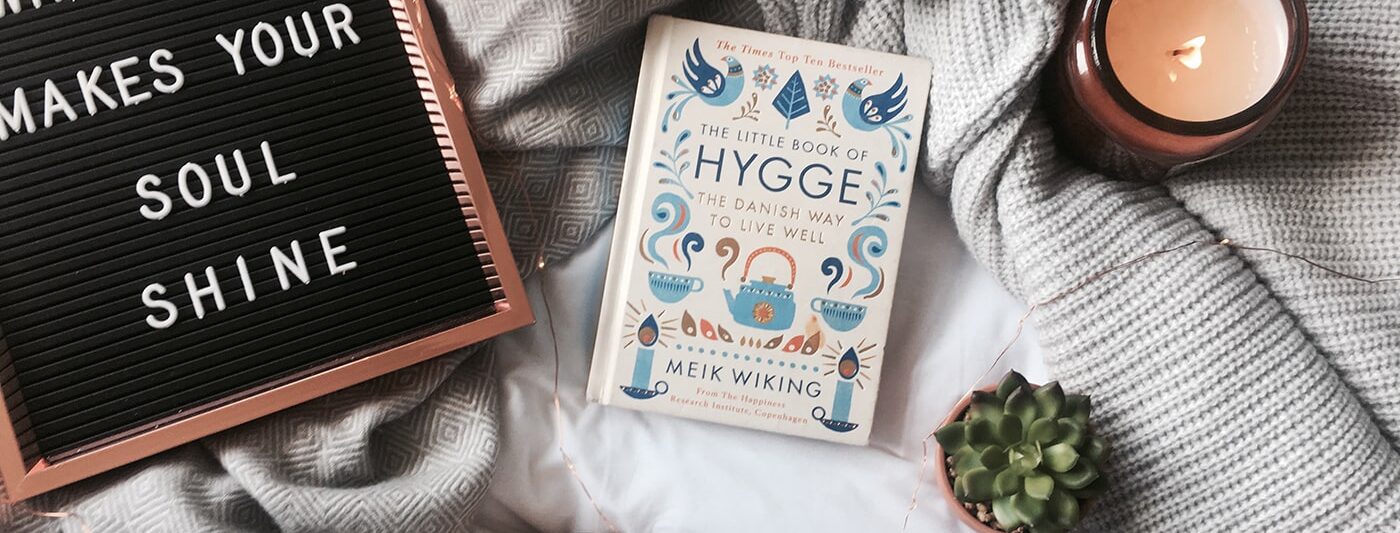Seasonal affective disorder (SAD), or the ‘winter blues’, is a real phenomenon, affecting about 16 million Americans every year. For many, the long, dark days of winter are something to endure, miserably, until Spring.
Think you could have SAD? Here are some common symptoms:
– Depression: misery, guilt, loss of self-esteem, hopelessness, diminished interest in activities, despair, and apathy
– Anxiety: tension and inability to tolerate stress
– Mood changes: extremes of mood and, in some, periods of mania in spring and summer
– Sleep problems: desire to oversleep and difficulty staying awake or, sometimes, disturbed sleep and early morning waking
– Lethargy: feeling of fatigue and inability to carry out normal routine
– Overeating: craving for starchy and sweet foods resulting in weight gain
– Social problems: irritability and desire to avoid social contact
– Sexual problems: loss of libido and decreased interest in physical contact
(Source: Mental Health America)
Get help from hygge
Hygge (pronounced HYU-gah) is a Danish lifestyle concept and currently one of their most popular exports.
Danes are some of the happiest people on Earth, in fact they ranked number one in the UN’s world happiness report for the last two years.
Although there’s no easy, direct translation, hygge is a state of mind that embraces coziness, comradeship, conviviality and contentment, all rolled into one. Remember that glowing feeling you might have had over the recent holidays? Perhaps you felt a kind of warmth from being with friends and family? Feelings of gratitude, sharing with others, wooly sweaters, warm drinks and roaring fires. These are all very hygge concepts.
We like hygge for all the reasons that it overlaps with Functional Medicine, and for the ways it can help fight those winter blues:
1. Destress. We’ve written about the damaging effects of stress before, but busy lives are de rigeur for most of us. Yet chronic stress is linked to many negative health outcomes. Hygge encourages us to slow down, avoid rushing, and turns up our relaxation response. Easy tip: the six second breath. You can do this wherever, whenever. Three seconds in, pause, three seconds out.
2. Build true relationships. Hygge encourages spending time tending to supportive relationships that make us feel nourished. Stronger social relationships are associated with lower risk of all-cause mortality. One of my personal goals is to start a monthly inspirational book group with a few of my closest friends. (Check in with me on doing this!)
3. Gratitude. Cultivating an appreciation for every-day, little things is very hygge. There’s nothing fancy, flashy or expensive about hygge. Gratitude is a huge depression-buster, especially in the context of chronic illness. We love gratitude lists at our clinic. Daily, write down at least three items you’re grateful for, and ideally 10 things. Even better? Find a friend to write a gratitude list, too. Share together. It’s a heartwarming, stress-busting, relationship building hygge experience, I promise!
Round it out with more Functional Medicine tools
If diving into hygge is not enough to turn around your winter, then Functional Medicine has other tools to help:
1. Vitamin D. Vitamin D deficiency is inevitable where we live in the North East US, and in fact for anyone living above the 35th parallel. If your doctor isn’t already, ask them to measure your 25-OH-D levels and supplement as needed to reach 40-80 mg/mL. Or try this unique mushroom hack to increase their vitamin D content.
2. Probiotics. You know the connection between our gut bugs and our mood, right? This appears in the scientific literature, and is now reaching mainstream media too. Probiotic supplements are a good option, or you can increase your intake of fermented foods such as sauerkraut, kimchi, or pickles. Don’t forget your prebiotics too (good food for happy gut bugs, including onion, garlic, asparagus and Jerusalem artichokes).
3. Eat fish. Fish, especially cold-water, oily fish such as mackerel, salmon and sardines, are rich in anti-inflammatory omega-3 fatty acids that can help alleviate symptoms of depression. Avoid fish that are high in mercury, however, such as tuna, King mackerel and shark.
4. Light it up. Using a light therapy box can be a helpful way to increase your light exposure and lessen the effects of shorter days and less sunshine. Not advised, however, if you have a history of bipolar disorder or eye issues; seek advice from your physician.
Please share with us your own hygge habits! I know some of you are actively cultivating hygge principles in your lives. I would love to hear what you’re doing.
If you find that these strategies are not enough, we recommend an evaluation by a functional medicine practitioner who can help you identify any unique underlying biochemical imbalances that can be contributing to your symptoms.


 Is it Safe to Use Flax Oil to Season Cast Iron Pans?
Is it Safe to Use Flax Oil to Season Cast Iron Pans?